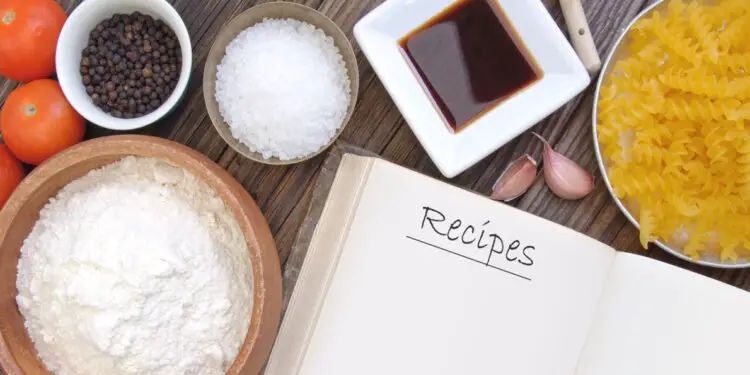The Art of Balance: How to Perfectly Combine Sweet and Savoury Flavours

As a cook, you’re probably already familiar with the basic concepts of sweet and savoury flavours. But have you ever stopped to think about how you can balance these flavours to create truly exceptional dishes? Whether you’re making a savoury entree, a sweet dessert, or something in between, the art of balancing flavours is key to creating a well-rounded and delicious meal.
But why is balancing sweet and savoury flavours so important? Simply put, it’s because our taste buds crave variety. A dish that’s too sweet or too salty can quickly become overwhelming and unappetizing. By incorporating both sweet and savoury elements into your dishes, you can create a harmonious blend of flavours that will keep your taste buds engaged and your guests coming back for more.
In this article, we’ll explore the art of balance in depth, from the basic principles of sweet and savoury flavours to practical tips for achieving the perfect balance in your cooking. Whether you’re a seasoned chef or a beginner cook, you’ll learn how to take your dishes to the next level with the power of flavour balance. So, let’s dive in and discover the secrets of sweet and savoury harmony!
The Science of Flavour: Understanding Sweet and Savoury Tastes
When it comes to flavour, there’s a lot more going on than meets the tongue. The science of taste is a complex and fascinating field, encompassing everything from the basic chemistry of our taste buds to the way our brains process flavour signals. Understanding the science behind sweet and savoury tastes is key to mastering the art of balance in your cooking.
First, let’s break down the basics: the five basic tastes. Sweet, sour, salty, bitter, and umami (or savoury) are the five tastes that our tongues can detect. Sweetness is usually associated with sugars and carbohydrates, while sourness is associated with acids like vinegar or citrus. Saltiness comes from, well, salt, and bitterness is often found in things like coffee or dark chocolate. Umami, on the other hand, is a more complex taste that comes from glutamates found in foods like meat, cheese, and mushrooms.
But how do sweet and savoury tastes work together in the brain? It all comes down to the way our taste buds and brain receptors process different flavours. When we taste something sweet, for example, our brains release dopamine, which signals pleasure and reward. The same goes for savoury flavours like umami, which can also trigger dopamine release. By combining sweet and savoury elements in your dishes, you can create a powerful flavour experience that engages multiple pleasure centres in the brain.
Of course, flavour isn’t just about taste – it’s also about aroma and texture. The way a dish smells, looks, and feels in your mouth can all influence your perception of its flavour. Aroma plays a particularly important role in flavour perception, as our sense of smell is closely tied to our sense of taste. Texture also matters, as it can affect the way flavours are distributed in the mouth and the way we experience different tastes. By paying attention to all these elements of flavour, you can create dishes that are truly balanced and satisfying.
The Rules of Combining Sweet and Savoury Flavours
Combining sweet and savoury flavours is an art that requires knowledge of the rules of flavour pairing. One of the most important rules is matching intensity levels. This means that if you have a strong savoury dish, you need a mild sweet accompaniment to balance it out.
Conversely, a strong sweet dish requires a mild savoury counterpart. Another rule is pairing complementary tastes. For instance, sweet and sour flavours are known to complement each other. Sweet and salty combinations can also create a beautiful balance, while sweet and umami flavours can offer a unique depth of taste.
Finally, texture is also important when balancing sweet and savoury flavours. Pairing contrasting textures, such as crunchy and creamy, or soft and crispy, can add dimension to your dish and elevate the flavour profile.
Creative Ways to Balance Sweet and Savoury Flavours
Once you have a grasp of the rules of combining sweet and savoury flavours, you can get creative with your dishes. One way to balance sweet and savoury flavours is by infusing sweet flavours into savoury dishes. Adding fruit, such as apricots or figs, or sweeteners like honey or maple syrup to meat or vegetable dishes can create a delicate balance of flavours. On the other hand, you can also incorporate savoury ingredients into sweet dishes, a typical treat in Thai cuisine. Herbs like thyme or rosemary, spices such as cumin or chili, or even bacon can add a unique depth of flavour to desserts, like maple-bacon cupcakes or chocolate and chili ice cream.
Another way to get creative with balancing sweet and savoury flavours is by pairing unexpected ingredients. Experiment with unique flavour combinations such as bacon-wrapped dates or chocolate-covered pretzels to create a delightful and surprising taste experience. Don’t be afraid to step out of your comfort zone and try new combinations – you might just discover a new favourite dish!
Recipes That Perfectly Balance Sweet and Savoury Flavours
Now that you know the rules of combining sweet and savoury flavours, it’s time to put them into practice with some delicious recipes. These recipes are guaranteed to impress your taste buds and show off your newfound skills in balancing flavours.
• First on our list is a Grilled Peach Salad with Balsamic Glaze and Goat Cheese. This salad is a perfect example of how sweet and savoury flavours can come together to create a refreshing and satisfying dish. The sweet peaches are balanced with tangy goat cheese and a savoury balsamic glaze, making it a perfect summer salad.
• If you’re in the mood for something heartier, try our Maple-Glazed Salmon with Roasted Brussels Sprouts. This dish is the perfect balance of sweet and savoury, with the maple syrup adding a touch of sweetness to the savoury salmon and earthy Brussels sprouts. It’s a healthy and satisfying dinner that will leave you feeling full and satisfied.
• Finally, for a simple and crowd-pleasing appetizer, try our Bacon-Wrapped Dates with Blue Cheese. This dish balances the sweetness of dates with the saltiness of bacon and the tanginess of blue cheese, making it the perfect party snack. Plus, it’s easy to make and sure to impress your guests.
With these recipes in your arsenal, you’ll be able to perfectly balance sweet and savoury flavours in all your future cooking endeavors. But if these are not enough, here’s an extra recipe for you to try: riceselect.com/recipe/bangkok-rice-shrimp-salad. Enjoy!










